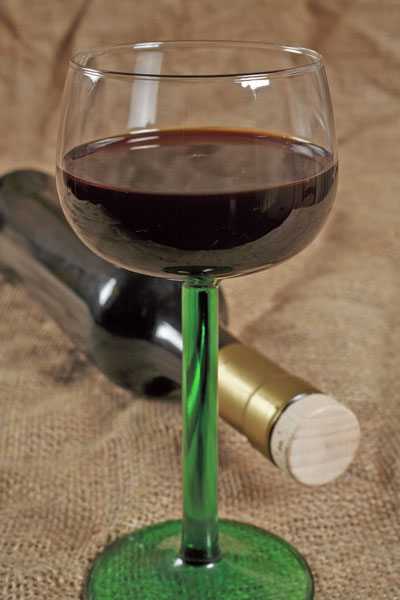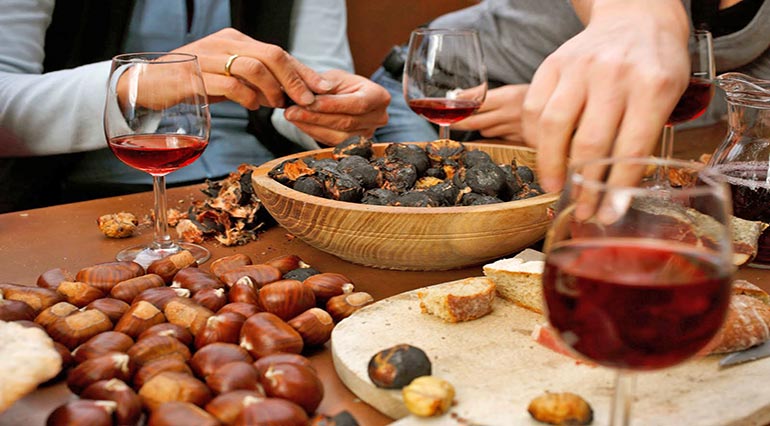“Vino cotto”, “vin cuott”, “vin cott” are the names given to a grape syrup typical of Abruzzo. It is usually consumed as a dessert and the alcohol content varies depending on how it is made and how long it is aged. It may be dry or sweet, for its residual sugar content, but always has a full-bodied aftertaste. The typical colour varies from amber-tinged red to garnet red, and it has an intense aroma.

The fresh must obtained from the pressing of white and/or red grapes is poured into a large aluminium, stainless steel or copper cauldron (for the latter a fragment of terracotta, known as a “pencio”, is laid on the bottom). It is then set to boil on a tripod or any other structure under which a low, strong heat can burn, so that the must boils but does not spill over from the recipient, and any foam that forms is removed. As the pot boils not only is water lost, but transformations occur that change the taste and aroma, conferring the product with its typical flavour and scent. There are two production techniques: one envisages slow, continuous boiling, which reduces the must by 50%-25% of its initial volume (the percentage varies according to the density required) and until no further foam is generated. The concentrated must obtained in this manner is left to rest and cool in glass, clay or stainless steel containers, and later stirred very slowly into variable proportions of a good must from a first pressing: from doubling to five-six times the volume if the concentrated must (called “sapa”). This is all poured into a wooden barrel that has been treated with sulphur and is left to ferment slowly.
The second method, similarly, reduces the must to a third of its initial amount, through constant and slow boiling, then leaving the concentrate to cool. The concentrated must obtained in this manner is left to rest and cool in glass, clay or stainless steel containers and then poured into a wooden barrel that has been treated with sulphur and is left to ferment slowly.
After fermentation the barrel is stoppered with cork or some other suitable materiale. It is normal practice to top up grape syrup produced in previous years with the new batch. Ageing in the barriques goes from at least one year to 30-40 years or more.
The oldest testimony regarding grape syrup in Abruzzo can be found in Filippo Rizzi’s book “Memoria sull’Abuso di Cuocere il Mosto” (1811), but the English writer Edward Lear also mentioned it in his “Illustrated Excursions in Italy” (1843-1844) when discussing Carsoli and the surrounding area: “… I have tasted some wines, aged for many years, that were almost as good as fine Marsala…” . He was referring to aged and matured “vino cotto” (not to be confused with wine mixed with must syrup that has a higher alcohol content and a longer shelf life). Guido Giuliani also mentioned grape syrup in his book “Il vino in Abruzzo (1975)”: “A particularly fine desert wine with a long tradition, which is drunk on memorable occasions or used to treat colds and influenza.” In fact, many Abruzzo wedding toasts even today call for “vino cotto”. Traditionally, the father of the groom offers guests this special wine, prepared at the son’s birth and kept in a small barrel for the say of his marriage, having been aged for at least 25-30 years and savoured by the participants who appreciate its excellent digestive properties as well as its flavour.

